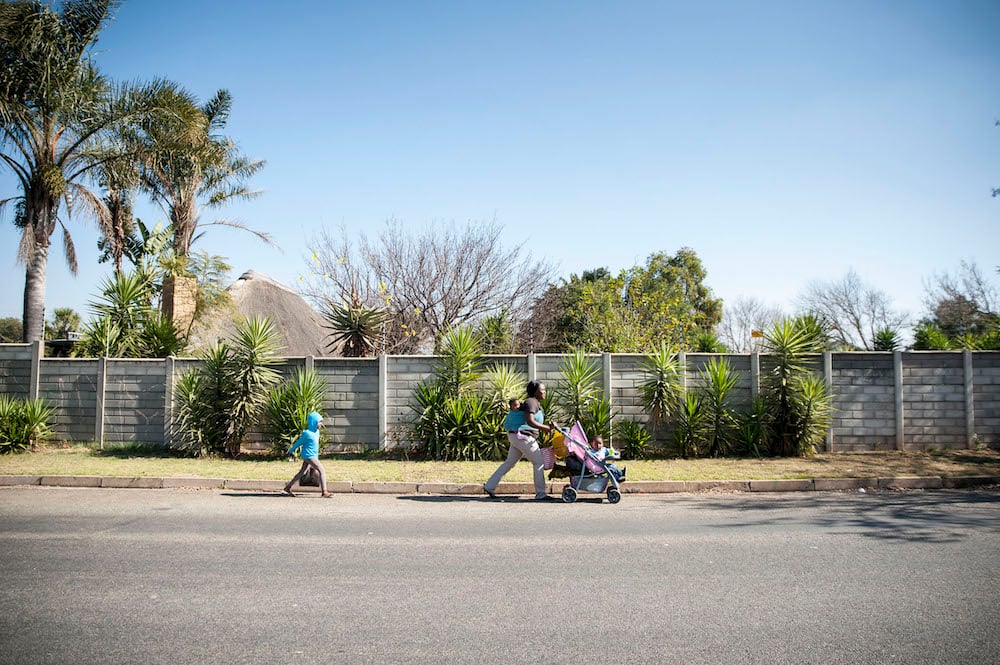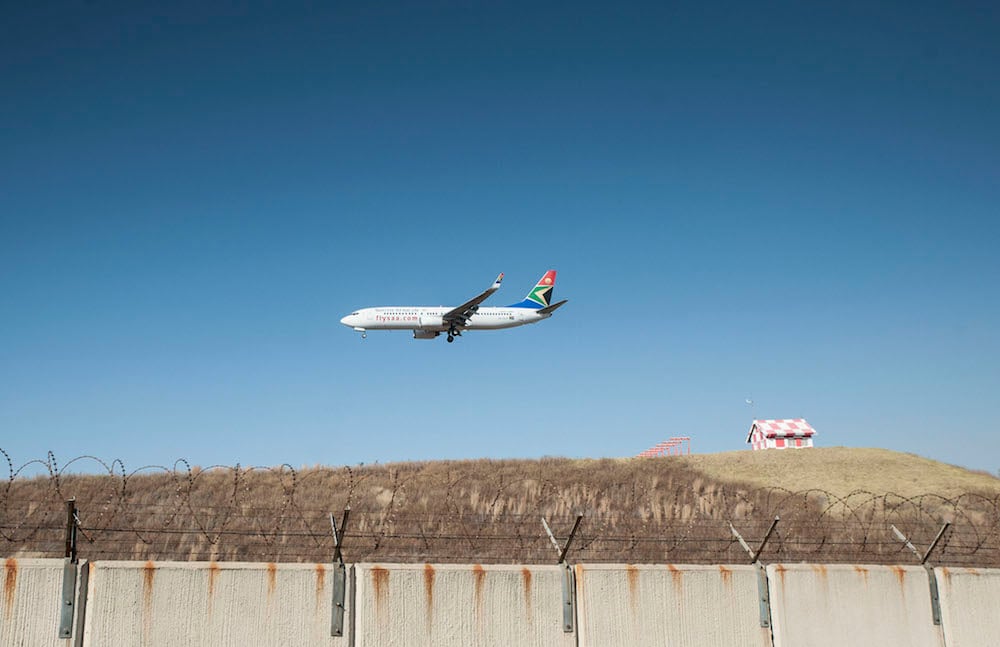Foul: Adri Ras has just come off a drip
It’s an obvious problem, if you know where to look. “You need to go to Bonaero Park. Everyone has respiratory problems. The kids … Jesus.”
That matter was OR Tambo International Airport and what it could do to lower air pollution. Bonaero Park is ground zero for what happens when the airport’s plans to control pollution are not put into practice.
Bonaero Park, a suburb of Kempton Park in Ekurhuleni, Gauteng, consists of 1960s-style brick-and-plaster houses and is home to 8 000 people. Mostly white, mostly Afrikaans-speaking.
It was built for employees of the nearby military complex of what is now Denel. From JF Kennedy to LaGuardia, the wide streets are named after airports around the world. Even God has taken on the theme, with the local church bearing the name Airport Christian Fellowship.
Not that the locals need any reminders of the industry that created the suburb, attractive thanks to low house prices. A collage of homes, sticky-taped on to the window of a local estate agent, shows that a two-bedroom flat can go for R430 000 – with parking and a token garden.
This is what attracted Natasha Barkhuizen to Bonaero Park more than a decade ago. Now she wishes she could afford to move out.
Standing behind her electric gate, she talks about her nine-year-old son’s debilitating asthma. He’s inside, playing. “He loves playing with his toys because he can’t play rugby or do any sports.”
Gert was born premature and asthma is one of the many symptoms of an immune system that cannot take pollution. “He has a nebuliser and I try my best to keep him calm so he doesn’t have attacks.” This has worked, and in the past year he has not had to go to hospital with a severe asthma attack – a regular occurrence in the past.
“His doctor says we should move away, but we cannot afford that,” Barkhuizen says. Most of his medicine is covered by the state, but she spends about R400 a month on extra medicine to ease his symptoms.

Emissions: Many residents of Bonaero Park, a suburb near OR Tambo International Airport, suffer from respiratory problems. (Photos: Madelene Cronjé)
A few streets away, Sandra Chetty struggles to be heard over the excited attempts of her three children to chip in with answers. They all have chest problems and winter sniffles. “We just moved here so the doctor says they are adjusting to the new environment,” she says.
The whine of the twin props of a private plane at maximum power washes over the conversation, just before it pops into the sky above her house.
“He says the airport can make people sick, especially the young children and grandparents.” Information is scarce, and she is waiting for winter to pass to see how their chest problems go.
The symptoms of Bonaero Park’s children are to be expected; they are mentioned in official documents from various government departments and state utilities. Gauteng’s air quality management plan says: “Airports represent significant sources [of pollution].”
The main pollutants are nitrous oxides, carbon oxides, sulphur dioxide, particulate matter, organic compounds, methane and lead particles, it says.
Ekurhuleni’s air quality management plan notes that, “despite contributing only a small fraction of the total emissions, the airport is a significant source of low-level, concentrated nitrous oxide emissions”.
The environment impact assessment for a realignment of Cape Town’s international airport points to similar problems for people living close to the airport.
The emissions come at every level of airports’ operations, and most can be avoided by tweaking how things are done. Airports Company South Africa (ACSA) has many of these tweaks in its long-term plans and says steady improvements in lowering air pollution are being made.
But people working around the country’s three biggest airports – Cape Town, King Shaka and OR Tambo – say all parties that work at these airports are “lax” when it comes to improving things. A major culprit is the airlines, which keep the auxiliary power units on planes ticking over to speed up their turnaround time. Gases are emitted, when the planes should be switched off and plugged into an electric supply at the airport.
Another pollution contributor is the fleet of vehicles that service each plane. These run on diesel and could be dispensed with if ACSA followed global trends in building plane berths with water and waste disposal running underground.
This would be an initial expense, but one required for the state utility to lower running costs and stay competitive, said a contractor working at OR Tambo. “This is a battle of incremental improvements and the bureaucracy means those improvements are rare.”
Putting a number to the cost of failing to push through improvements is impossible because it is another part of South Africa’s air pollution story that receives scant attention.

The health department does not break down symptoms on this level. Data from air quality stations in Ekurhuleni were not released in the environment department’s last state of air report, because they had not been running for long enough to create a complete picture of pollution. No comprehensive research has been done in the communities that live around airports.
The only source of information for the environmental footprint would come from two “air quality impact assessments” for OR Tambo and Cape Town airports. ACSA has these reports, but a request for access to them is still waiting on a promised phone call to materialise.
This means the people living in Bonaero Park know why they are sick, but have no way of proving this.
Adri Ras – speaking slowly and constantly stopping to let her lungs catch up with her desire to speak – was on a drip last week because her chest problems flared up. Hospital visits are frequent.
“We have an airport with those engines at full power when they take off. Nobody else has that in their backyard, so it’s pretty obvious why people here get sick.”
It is worst at night, when the big international flights take off, she says. “It’s a good neighbourhood in all other ways but something has to be done to stop those planes making us sick.”
The local pharmacy says its range of products for easing chest problems – from medication to herbal remedies – are best sellers.
The airport is the worst kind of neighbour – one that throws a party and forces everyone else to clean up the mess. Except in this case that mess is sickness, constricted chests and children who will never live up to their potential.